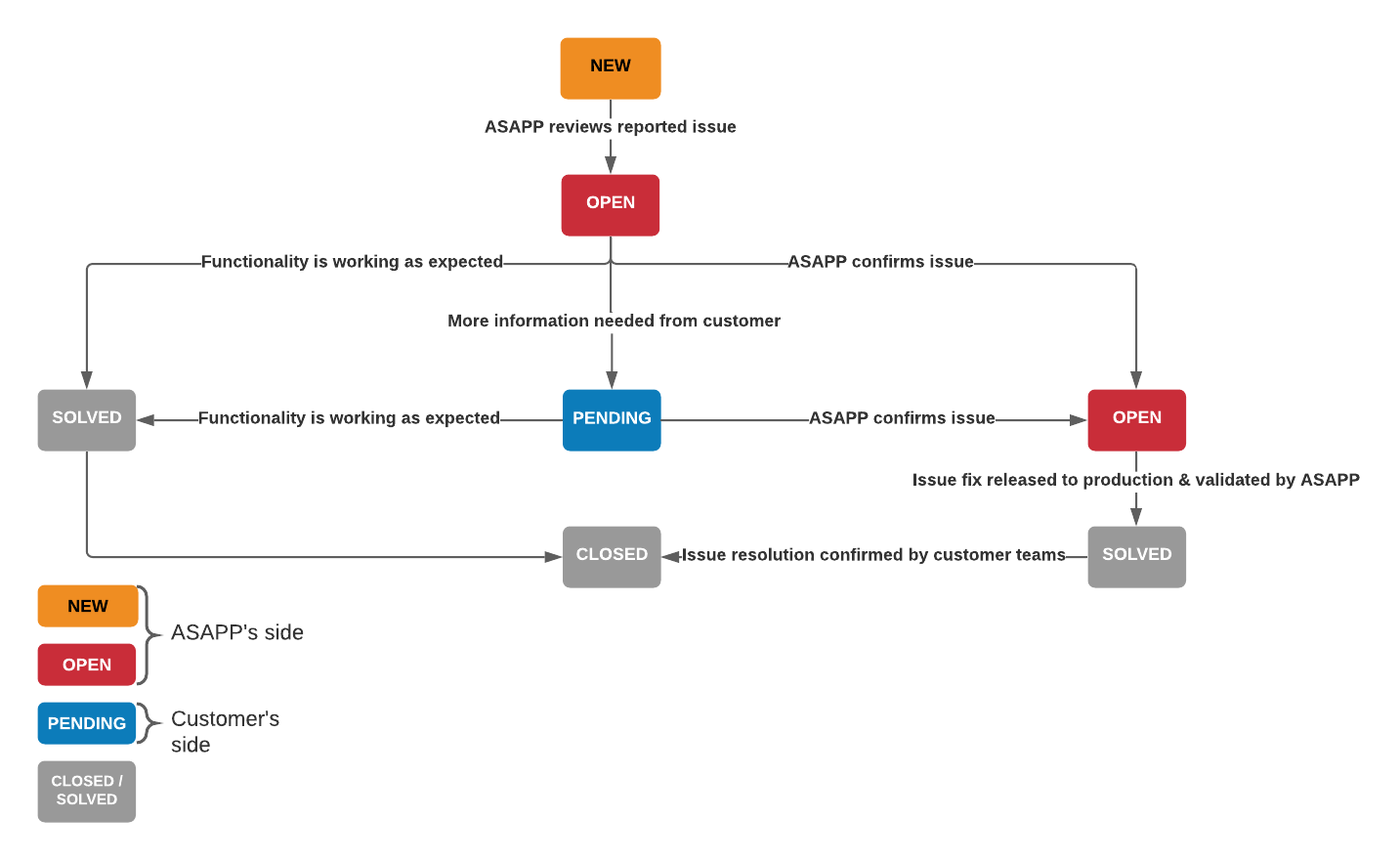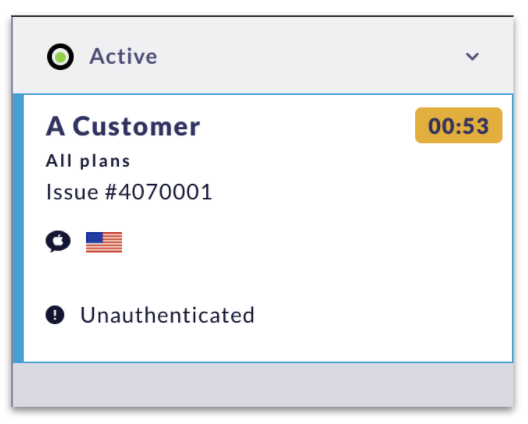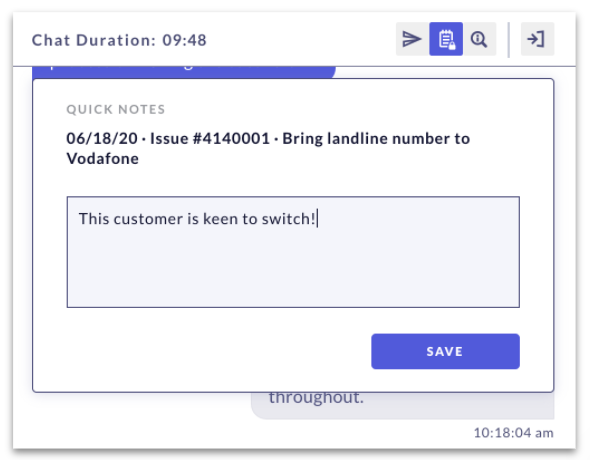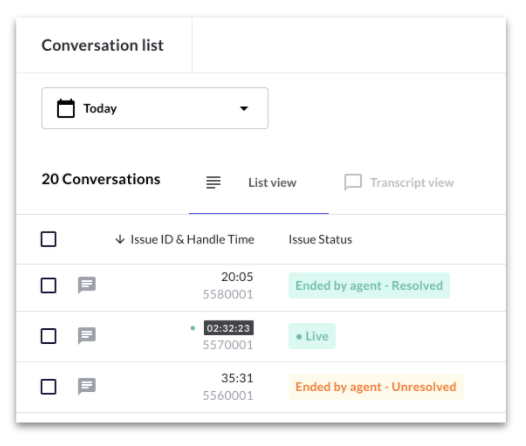Incident Management
Overview
The goals of incident management at ASAPP are:
- To minimize the negative impact of service incidents on our customers.
- To restore our customers’ ASAPP implementation to normal operation as quickly as possible.
- To take the necessary steps in order to prevent similar incidents in the future.
- To successfully integrate with our customers’ standard incident management policies.
Severity Level Classification
| Severity Level | Description | Report To |
|---|
| 1 | ASAPP is unusable or inoperable; a major function is unavailable with no acceptable bypass/workaround; a security or confidentiality breach occurred. | Service Desk interface via support.asapp.com |
| 2 | A major function is unavailable but an acceptable bypass/workaround is available. | Service Desk interface via support.asapp.com |
| 3 | A minor function is disabled by a defect; a function is not working correctly; the defect is not time-critical and has minimal user impact. | Service Desk interface via support.asapp.com |
| 4 | The issue is not critical to the day-to-day operations of any single user; and there is an acceptable alternative solution. | Service Desk interface via support.asapp.com |
Standard Response and Resolution Times
This table displays ASAPP’s standard response and resolution times based on issue severity as outlined in the Service Level Agreement.
| Severity Level | Initial Response Time | Issue Resolution Time |
|---|
| 1 | 15 minutes | 2 hours |
| 2 | 15 minutes | 4 hours |
| 3 | 24 hours | 15 business days |
| 4 | 1 business day | 30 business days |
Severity Level 1 Incidents
Examples:
- Customer chat is inaccessible.
- >5% of agents are unable to access Agent Desk.
- >5% of agents are experiencing chat latency (>5 seconds to send or receive a chat message)
Overview:
- Severity Level 1 Incidents can require a significant amount of ASAPP resources beyond normal operating procedures, and outside of normal operating hours.
- Escalating via Service Desk initiates an escalation policy that is more effective than reaching out directly to any individual ASAPP contact.
- You will receive an acknowledgment from ASAPP within 15 minutes.
Severity Level 2 & 3 Incidents
Severity Level 2 Examples:
- Conversation list screen within the Admin dashboard is blanking out for supervisors, but Agents are still able to maintain chats.
- User Management screen within Admin is unavailable.
Severity Level 3 Examples:
- Historical Reporting data has not been refreshed in 90+ minutes.
- A limited number of chats appear to be routing incorrectly.
- A single agent is unable to access Agent Desk.
Issue Ticketing and Prioritization
- ASAPP maintains all client reported issues in its own ticketing system.
- ASAPP triages and slates issues for sprints based on severity level and number of users impacted.
- ASAPP’s engineering teams work in 2 week sprints, meaning that reported issues are typically resolved within 1-2 sprints.
- ASAPP will consider Severity Level 1 and 2 issues for a hotfix (i.e. breaking the ASAPP sprint and release process, and being released directly to PreProd / Prod).
Issue Reporting Process
- For Severity 1 Issues:
In the event of a Severity 1 failure of a business function in the ASAPP environment, report issues via the Service Desk interface at support.asapp.com by filling out all required fields.
By selecting the Severity value as Critical, you will automatically mobilize ASAPP’s on-call team, who will assess the incident and start working on a solution if applicable.
- For Severity 2-4 Issues:
In the event of any non-critical issues with a business function in the ASAPP environment, report issues via the Service Desk interface at support.asapp.com by filling out all required fields.
ASAPP will escalate the reported issue to the relevant members of the ASAPP team, and you will receive updates via the ticket comments.
The ASAPP team will follow the workflow outlined below for each Service Desk ticket. Each box corresponds to the Service Desk ticket status.
Issue Reporting Template
When you report issues to ASAPP, please provide the following information whenever possible.
- Issue ID: provide the Issue ID if the bug took place during a specific conversation.
- Hashed, encrypted customer ID: (see below)
- Severity*: provide the severity level based on the 4 point severity scale.
- Subject*: provide a brief, accurate summary of the observed behavior.
- Date Observed*: provide the date you observed the issue. (please note: the observed date may differ from the date the issue is being reported)
- Description*: provide a detailed description of the observed issue, including number of impacted users, the specific users experiencing the issue, impacted sites, and the timestamp when the issue began.
- Steps to Reproduce*: provide detailed list of steps taken at the time you observed the issue.
- ASAPP Portal*: indicate environment if the bug is not in production.
- Device/Operating System*: provide the device / OS being utilized at the time you observed the issue.
- Browser*: provide the browser being utilized at the time you observed the issue.
- Attachments: include any screenshots or videos that may help clearly illustrate the issue.
- * Indicates a required field.
ASAPP deliberately does not log unencrypted customer account numbers or any kind of personally identifiable information.
Locate the Issue ID
In Desk: During the conversation, click on the Notes icon at the top of the center panel.
The issue ID is next to the date. The issue ID is also in the Left Hand Panel and End Chat modal window.
In Admin: Go to Conversation Manager.
Issue IDs are in the first column for both live and ended conversations.




